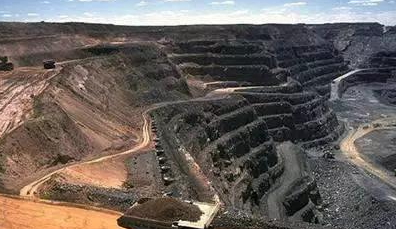Guizhou barite is a relatively common mineral of barium, and its composition is barium sulfate. Produced in low-temperature hydrothermal veins, such as quartz-barite veins, fluorite-barite veins, etc., often coexist with galena, sphalerite, chalcopyrite, cinnabar, etc. Most of the barite deposits produced in Hunan, Guangxi, Qinghai, and Jiangxi in China are huge hydrothermal single mineral veins. Barite can also be produced in sedimentary rocks and appears as nodules, mostly in sedimentary manganese deposits and argillaceous and sandy sedimentary rocks in shallow seas. In the residual clay cover of weathered residual deposits, they often form nodules and blocks.
Chemical composition: BaO: 65.7%, SO3: 34.3%. There are Sr, Pb and Ca isomorphic substitutions in the composition.
The crystals of the barite ore have a large tube shape, and the crystals can sometimes form a rose-shaped or bifurcated crystal block, which is called crown hairy barite. Pure barite is colorless and transparent, generally white, light yellow, and has glass luster. In addition, barite can be used as a white pigment (we are commonly known as Lide powder), and can also be used in chemical, paper, and textile fillers. In glass production, it can act as a flux and increase the brightness of glass. However, it is mainly used as a weighting agent in the drilling industry and for refining barium.

Barite structure properties: Barite is a non-metallic mineral product that contains barium sulfate (BaSO4) as the main component. Pure barite is white and shiny. It is often gray due to the influence of impurities and mixtures Light red, light yellow, etc., barite with fairly good crystallization can also appear as transparent crystals. Barite sulphate mineral. The composition is BaSO4. Barium-containing minerals widely distributed in nature. Barium can be replaced by the complete isomorphism of strontium to form lapis lazuli; it can be partially replaced by lead to form Beitou Stone (named after being produced from Beitou Hot Spring in Taiwan). Orthogonal (orthorhombic) crystal system, crystals often become thick plate-like. Pure barite is transparent and colorless, generally white, light yellow, glass luster, cleavage surface is pearl luster. Complete and moderate cleavage in 3 directions, Mohs hardness 3 ~ 3.5, specific gravity 4.5. Mainly formed in the low-temperature hydrothermal conditions.
Barite is chemically stable, insoluble in water and hydrochloric acid, and non-magnetic and toxic. The chemical composition of barite is Ba [SO4], and the crystal is a sulfate mineral of orthorhombic (orthorhombic) crystal system. Often thick plate-like or columnar crystals, mostly dense block or plate-like, granular barite aggregate. When pure, it is colorless and transparent. When it contains impurities, it is dyed into various colors. The streaks are white. The glass is shiny and transparent to translucent. The three groups are completely cleaved, and the included angle is equal to or close to 90 °. Mohs hardness is 3-3.5, specific gravity is 4.0-4.6. Identification characteristics: plate-like crystals, small hardness, complete cleavage near the right-angle intersection, high density, no foaming in the presence of hydrochloric acid, and distinguish it from similar calcite. Barite is a non-metallic mineral product with barium sulfate (BaSO4) as the main component. Pure barite is white and shiny. It is usually gray, light red, light yellow, etc. due to the influence of impurities and mixtures. Fairly good barite can also appear as transparent crystals. Barite is a mixture.
The purification method of barite manufacturers: the open-pit mining method of the residual slope deposits, and the primary mining method mostly uses the underground mining method. See "Phosphorite Block" for general process flow. The beneficiation methods are mainly manual, re-selection, magnetic separation and flotation.